Välkommen to Midsommar | Celebrating Swedish Culture in Maine’s North Country
Swedish culture comes alive in Maine’s North Country at the annual Midsommar festival, a colorful three-day event marking the summer solstice.
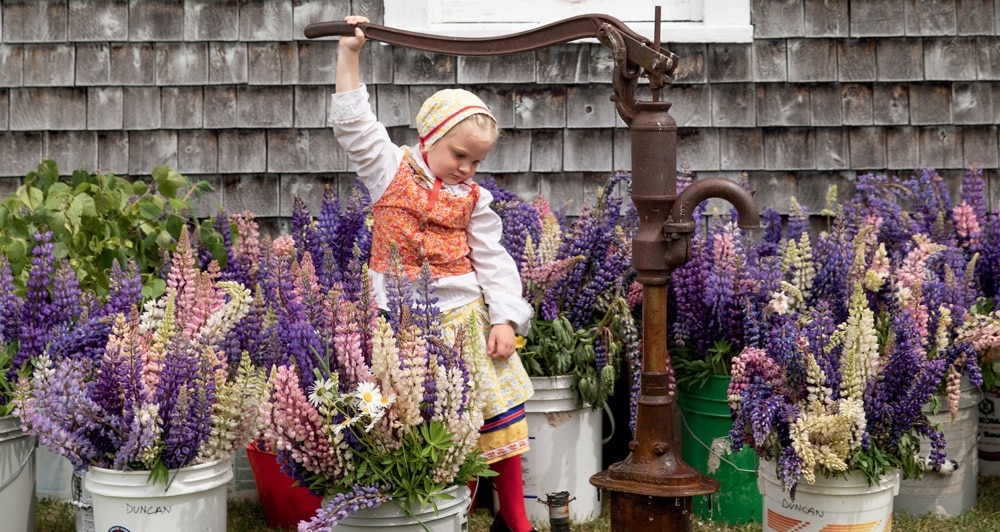
Coffee By Design | Portland, Maine
Photo Credit : Katherine KeenanBy Katy Kelleher
In a field encircled by tall pines, a group of volunteers are spread out and hunched down, backs bent in labor, sun beating down on necks. The air thrums with pollinators. We’re not collecting ingredients for food or objects for sale—we’re here to pick flowers. As I work, I hear an engine spark to life, and an old blue truck begins making its way across the grass toward the bumpy country road. The bed is filled with buckets of lupines. If you were to bury your head in one of them, you’d be submerged in a cloud of honey scent, intoxicating and light as a summer breeze.
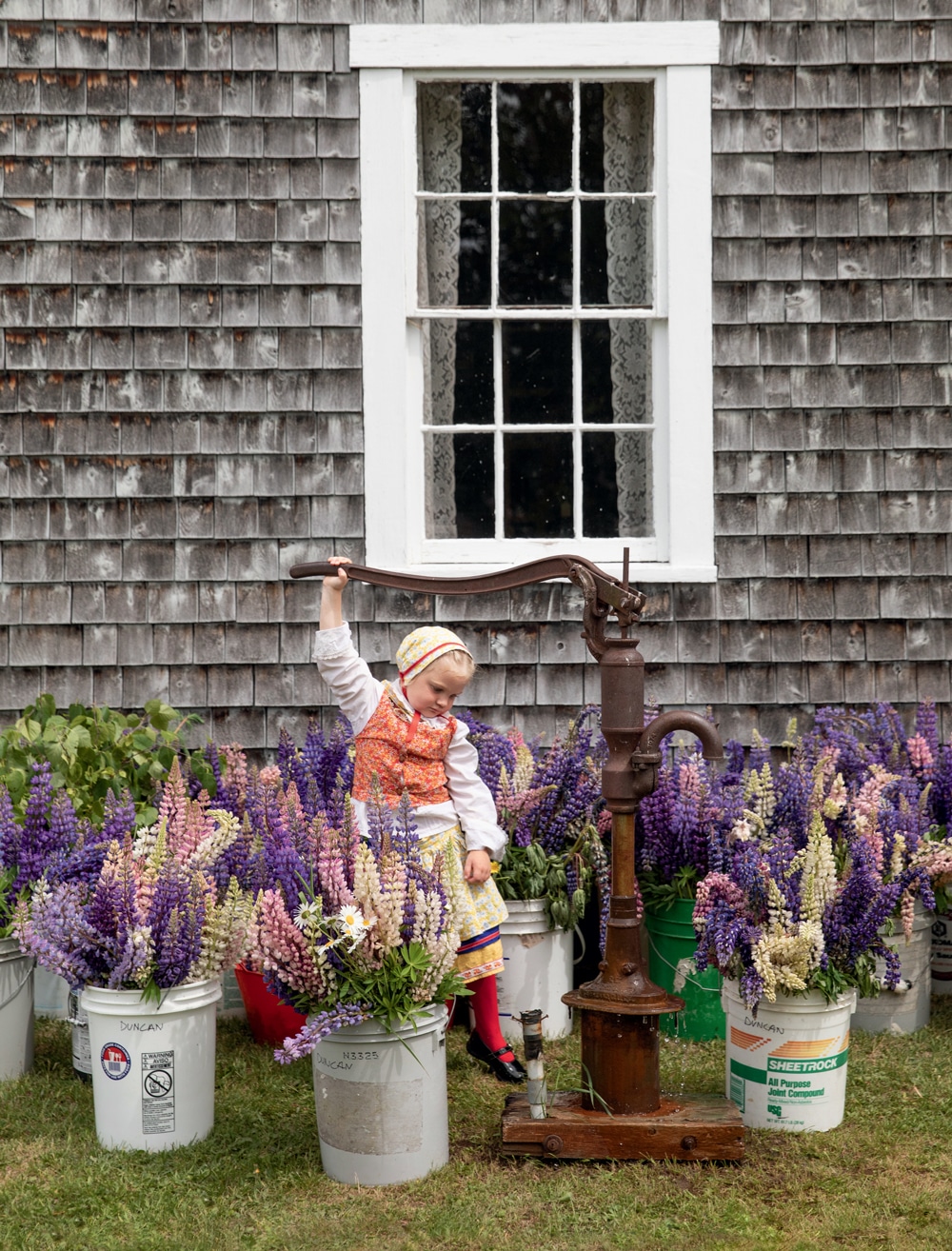
Photo Credit : Greta Rybus
It’s late June and the sun won’t set for hours, but I’m already tired. I arrived in Aroostook County late last night after spending six hours cruising up I-95 and down country roads. Situated at the height of Maine, Aroostook is a far-flung destination, more than 300 miles distant from Portland. I’m here for the Midsommar Festival, a three-day event that takes place annually in the tiny villages of Stockholm and New Sweden.
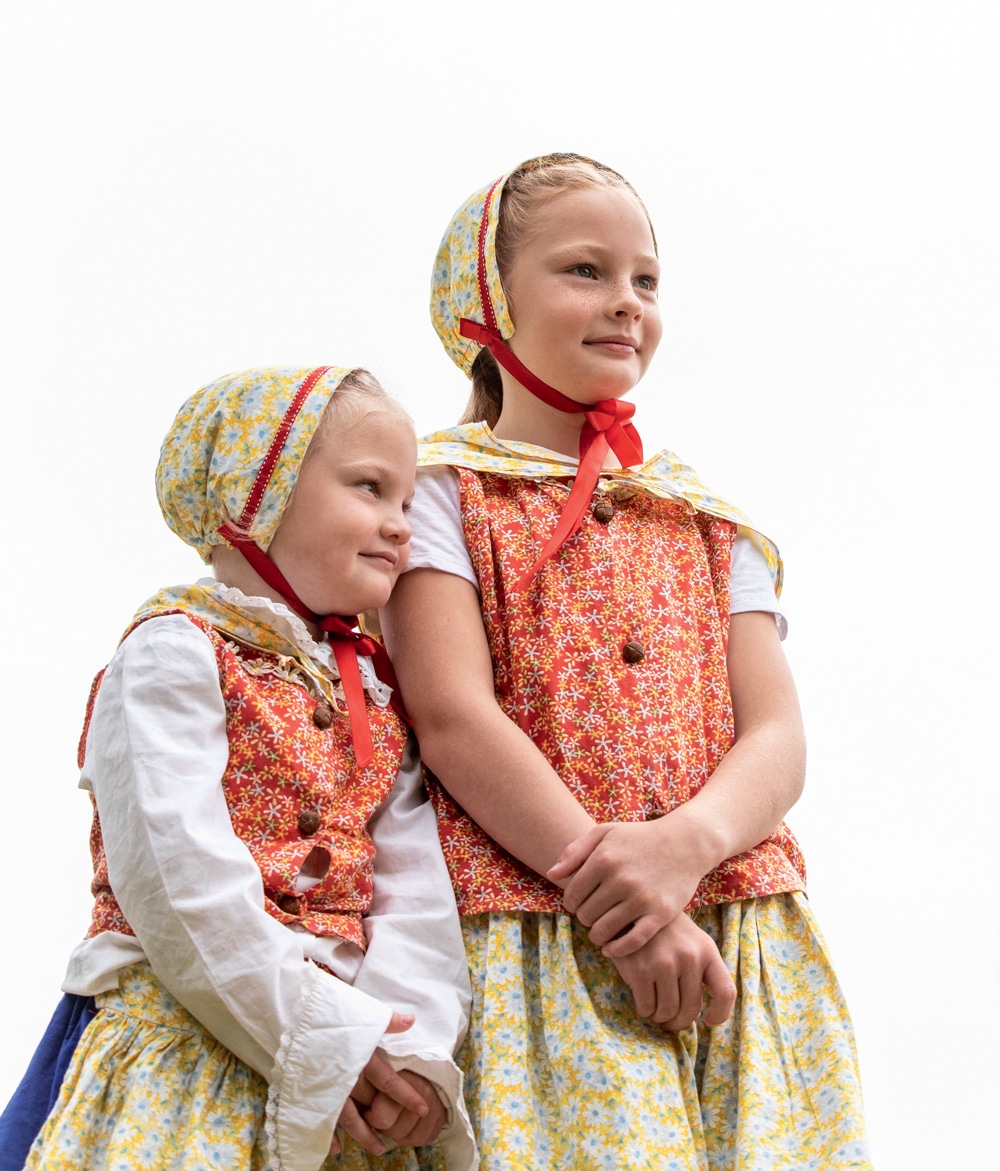
Photo Credit : Greta Rybus
Midsommar is a holiday with deep roots in Europe. People have been gathering flowers and lighting bonfires to mark the summer solstice since the sixth century, but it wasn’t until the Victorian era that Midsommar became a particularly Swedish event. While modern Midsommar festivals in Sweden have evolved with the times (many of them now include alcohol and contemporary music), the festival at the Maine Swedish Colony, an area that includes New Sweden and Stockholm, has remained staunchly—and rather charmingly—traditional. “The settlers came from Sweden in 1870, and we’ve never really changed how we celebrated,” explains festival cochair Brenda Näsberg Jepson. “To modern-day Swedes, our Midsommar seems quaint and old-fashioned.”
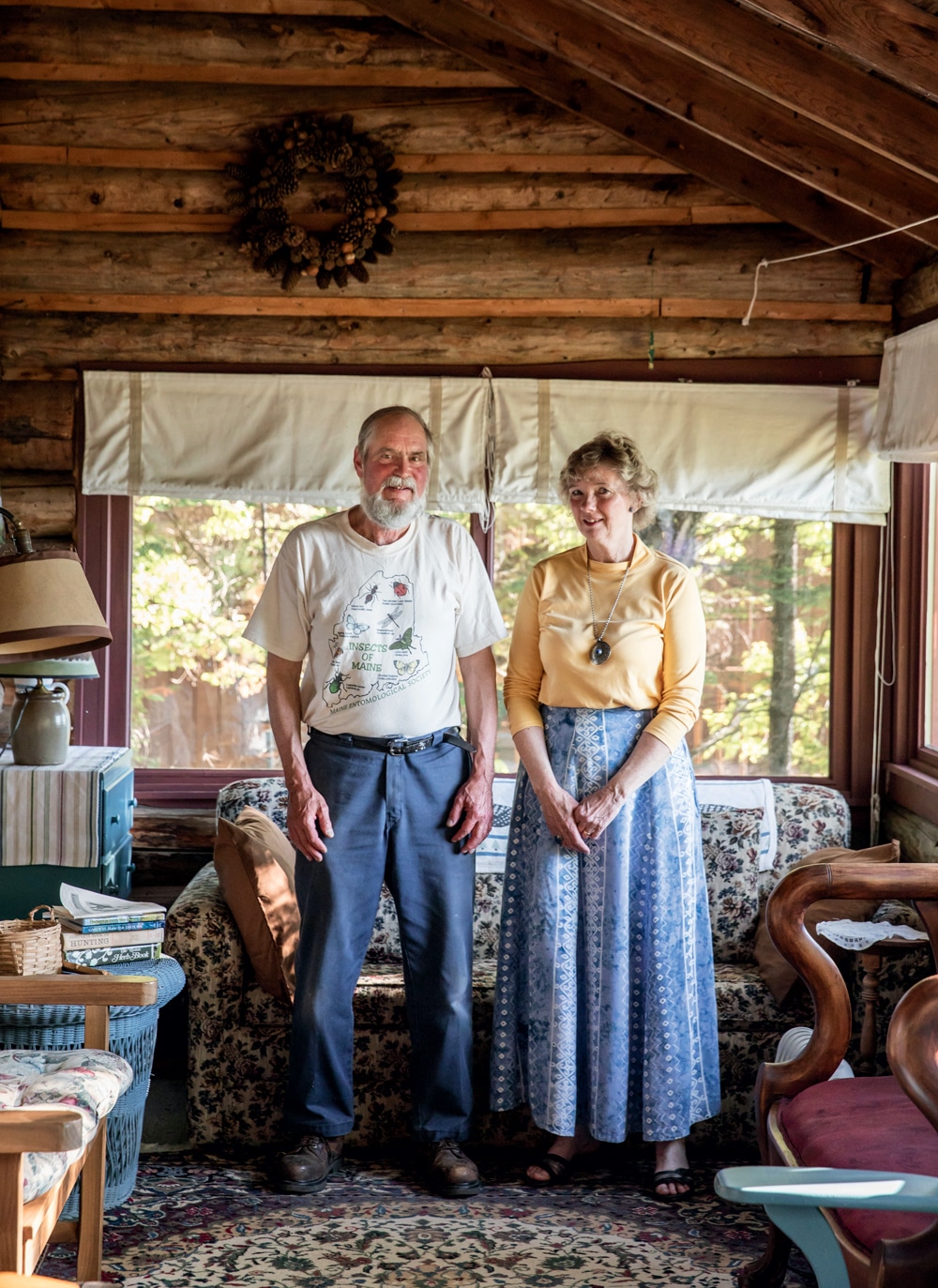
Photo Credit : Greta Rybus
This steadfast adherence to form is exactly why visitors come from all over the world to take part in this solstice celebration. There is something transformative about the event (Jepson says it’s like “walking into a time warp,” and I’m inclined to agree). Although there are only some 800 attendees, this is a large turnout for a town with only 610 residents. Here’s how it unfolds: On Friday, children and local adults come together to gather flowers and prepare the food. That evening, everyone descends on the American Legion hall in Stockholm to enjoy a feast of Swedish meatballs, mashed potatoes, lingonberry jam, and sweet pickles. There is live music and cheerful, anticipatory gossip. On Saturday, they gather in traditional dress outside the New Sweden Historical Society Museum to deck the maypole in lupines, watch the Little Folk Dancers twirl and clap around the towering cross covered in blossoms, and participate in such activities as flower crown making and Dala horse painting.
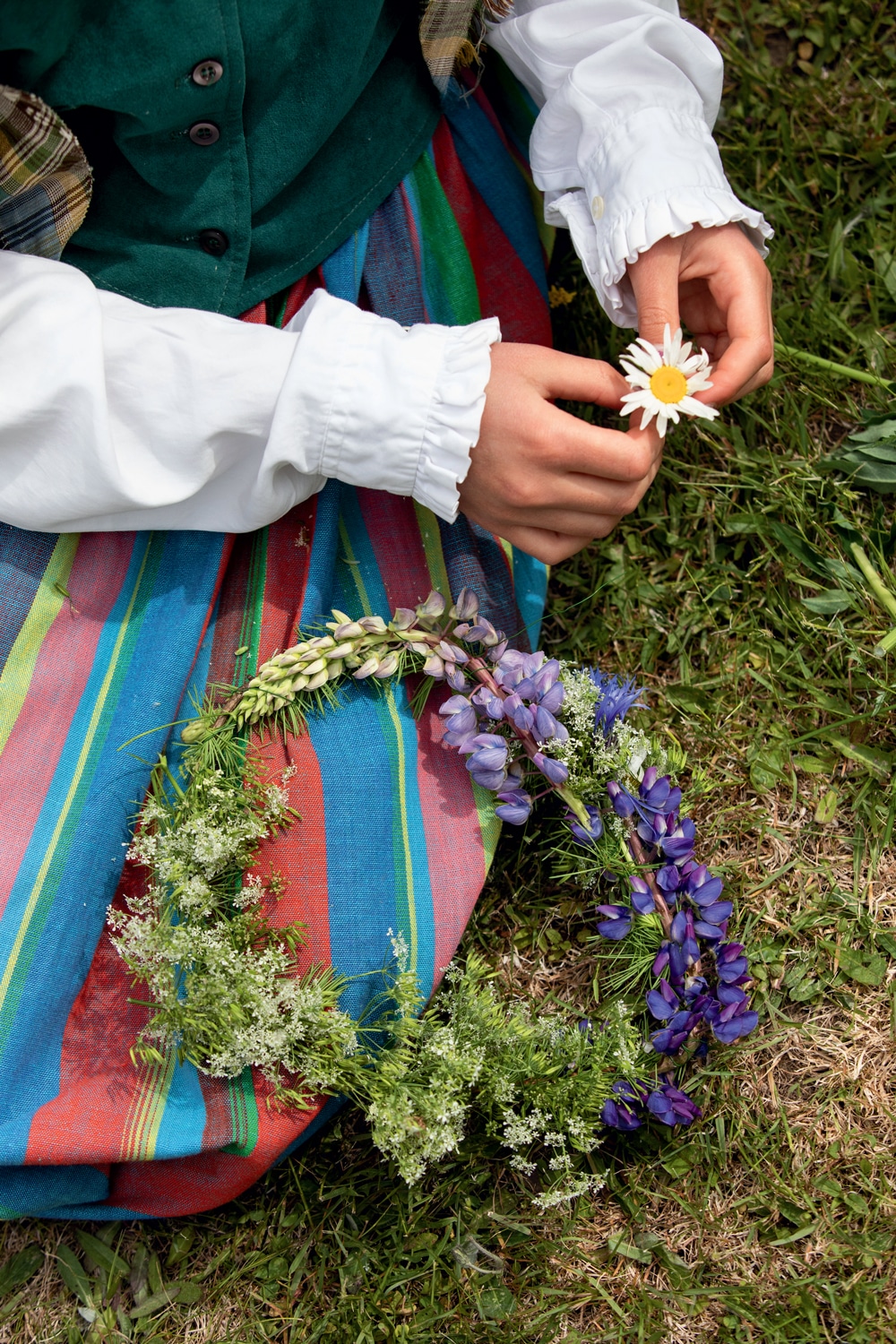
Photo Credit : Greta Rybus
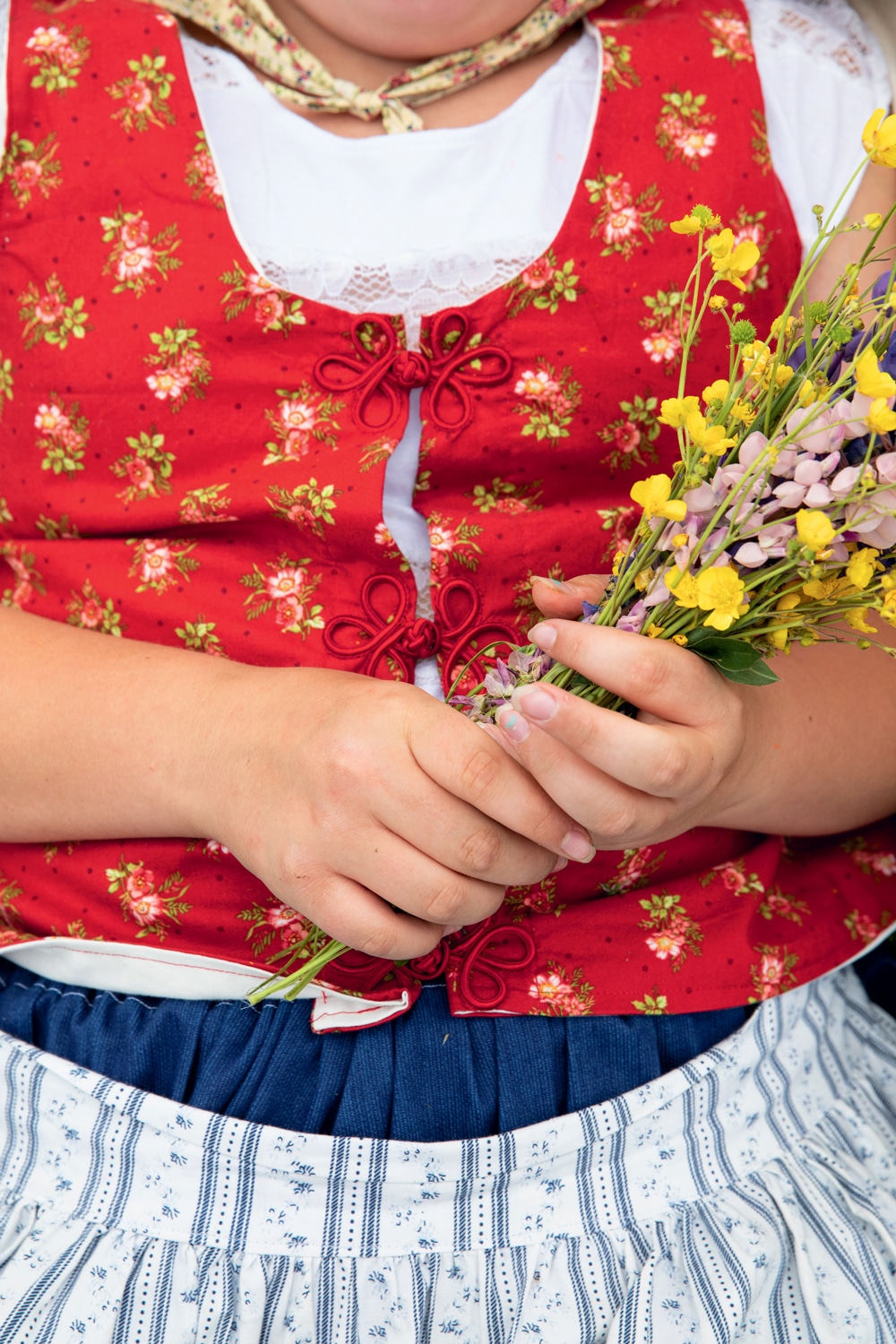
Photo Credit : Greta Rybus
Throughout the weekend, there are demonstrations at the forge, games of kubb on the church lawn, and vendors selling food, crafts, and souvenirs to tourists and townsfolk alike. On Sunday, the revelers attend church services at Thomas Park. There is more eating, more dancing, more music. And throughout it all, there is endless talk about heritage, that elusive concept that ties one generation to the next, one group of displaced people back to their homeland. Heritage, I’m reminded at Midsommar, is something to celebrate and treasure—not something to protect or hoard.
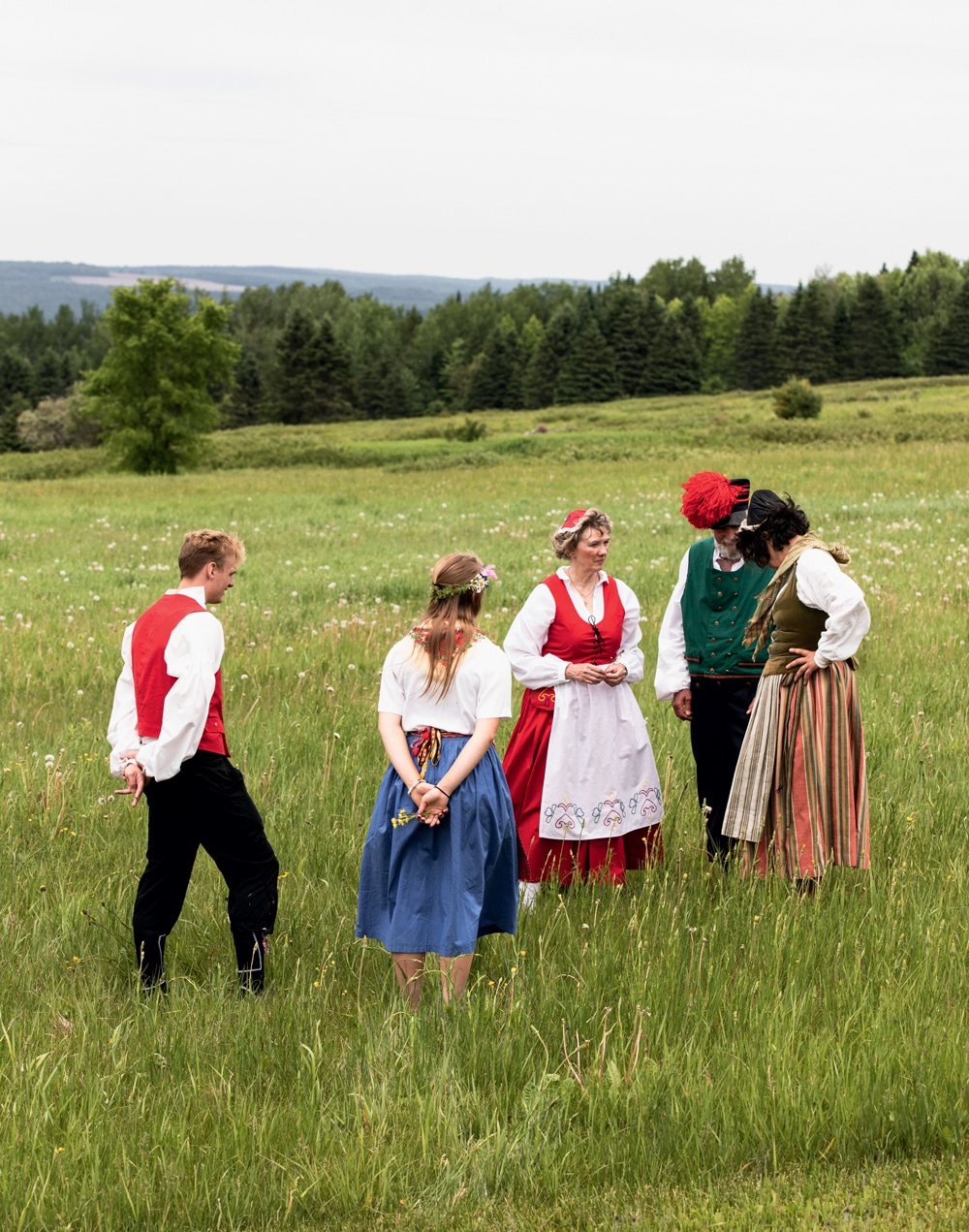
Photo Credit : Greta Rybus
“Everyone is Swedish here.” It’s a phrase I hear time and again as I wander the grounds. I’m not Swedish—I’m Irish and Czech and German, a typical American mutt from Massachusetts—but as I sit in the kitchen of Jepson’s log cabin, the air rich with the yeasty scent of baking kanelbullar and the fresh aroma of pine, I begin to pretend.
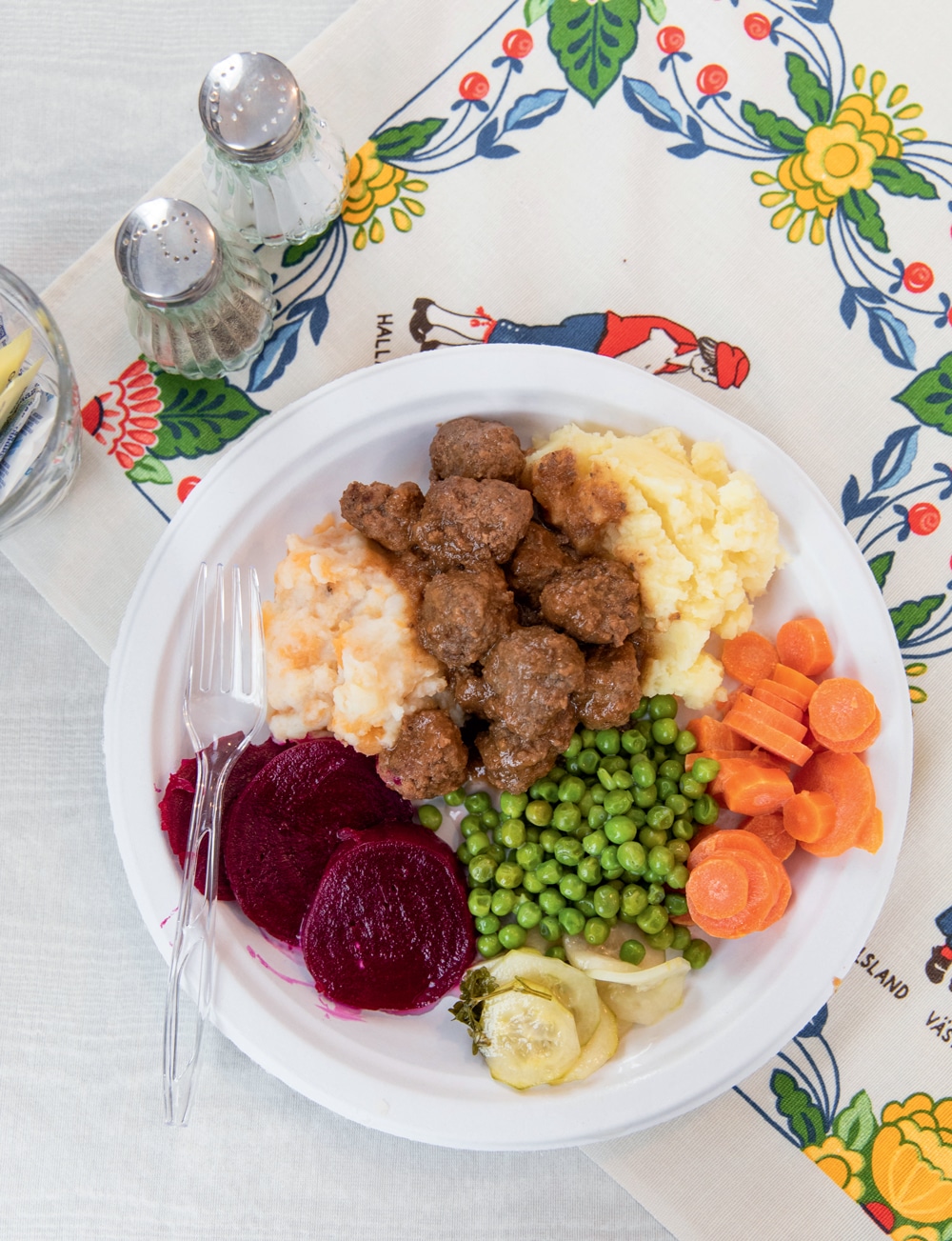
Photo Credit : Greta Rybus
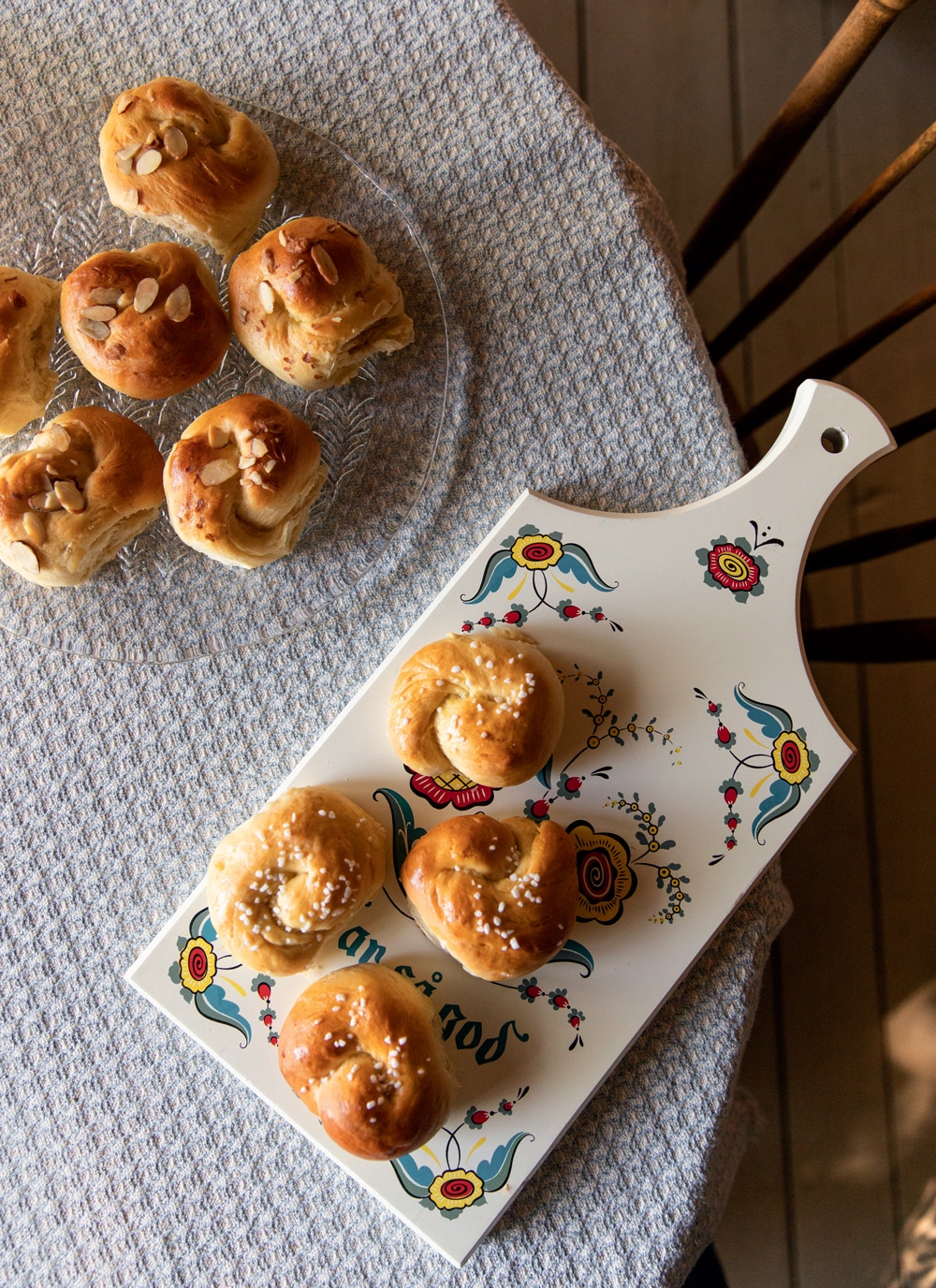
Photo Credit : Greta Rybus
For the past 24 hours, I’ve been hearing stories of the people who came over from Sweden to form the New Sweden colony in Maine, tales told by their modern descendants. The first settlers were invited by the state of Maine to come, till the rocky soil, plant potatoes and grow them, help fight famine. After Jepson relays her family’s well-worn story to me, she says, “It kind of kills me to see what’s happening now.” Under her crown of braided hair, her face is slightly pained. She’s expressed her worries about whether Midsommar will continue, since there are so few young people involved in the festivities, but this pain is deeper than that. “We’re here because the state of Maine needed immigrants,” she says after a pause. “It needed people to replace those farmers. Now, we still need people. We want kids to go to the school here, and to celebrate with us.”
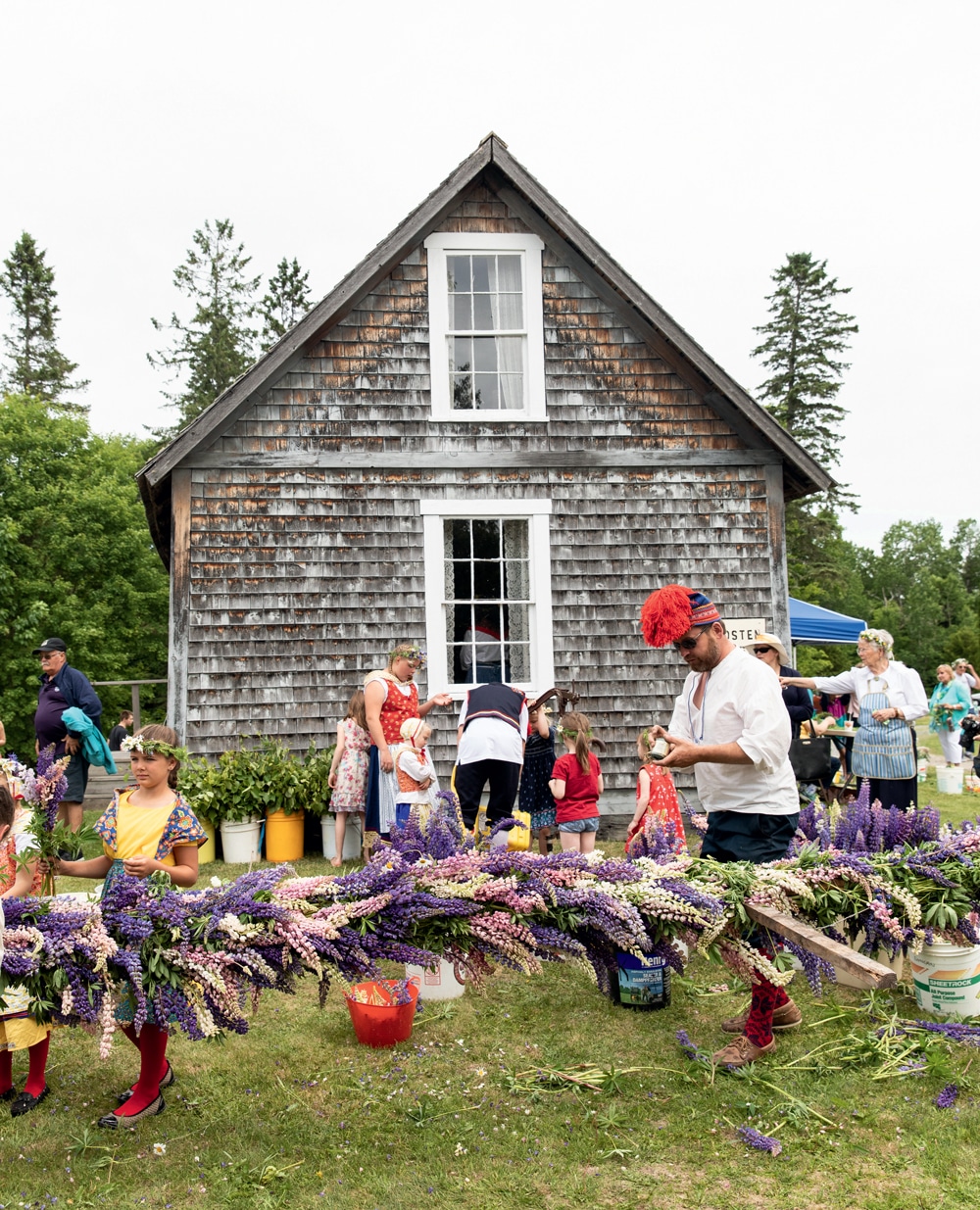
Photo Credit : Greta Rybus
Midsommar is a festival of lightness, flowers, warmth, and food. It’s also a celebration of the natural movement of people. People take a lot of pride in the stories of how their great-grandfathers and great-great-grandmothers wound up living in northern Maine, but there’s also a sense of latent worry. Aroostook County is a place that’s dwindling in population, and it has been for years. For these Mainers, immigration isn’t a problem to be solved. It’s a necessity.
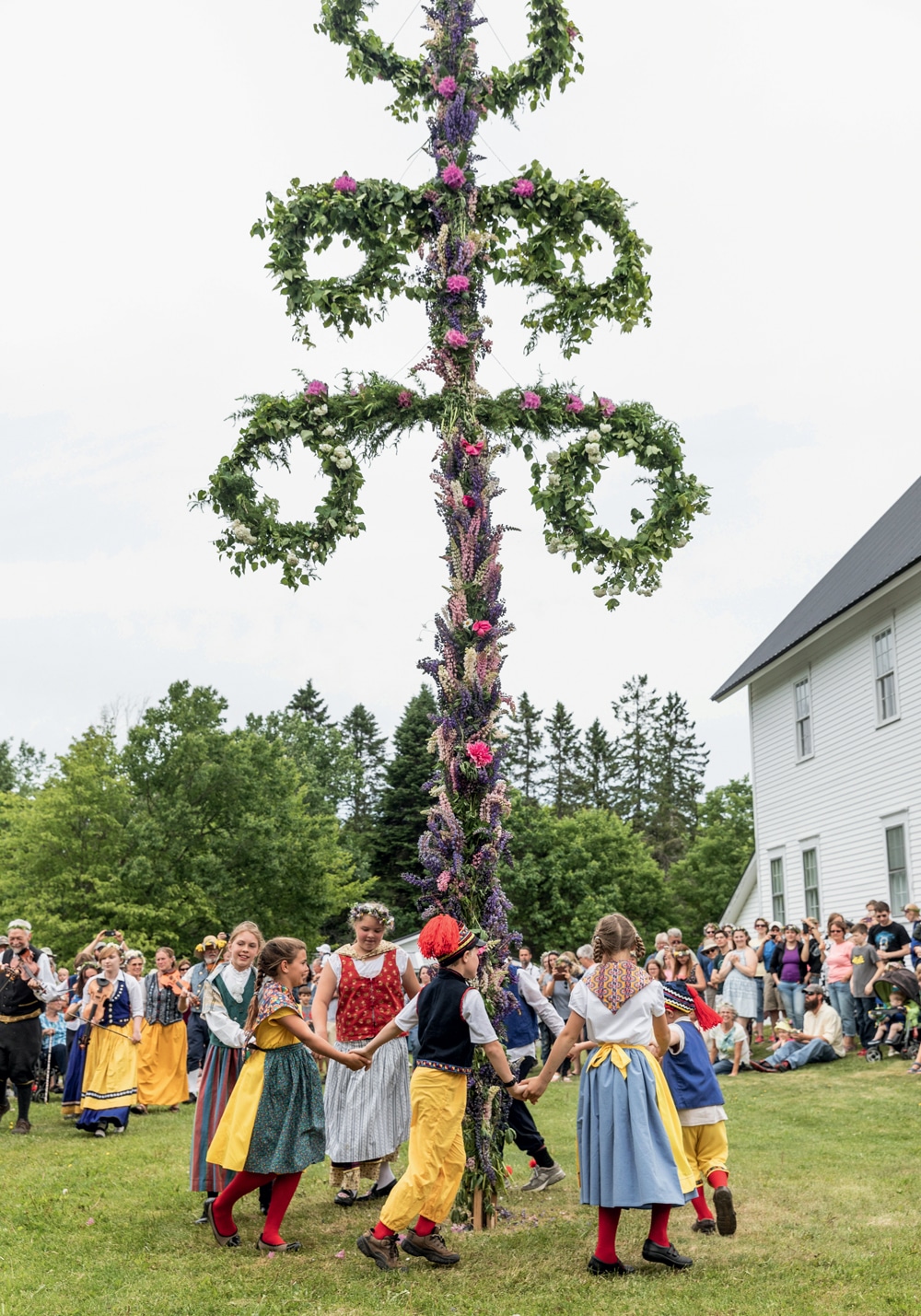
Photo Credit : Greta Rybus
At the New Sweden Historical Society, Lynn Johnson helps people trace their lineage. A New Sweden native, Johnson now lives in California, but she makes the pilgrimage back to Maine every year to “collect and share information about the community,” she explains. The amateur genealogist has in-depth information on more than 6,000 people and has helped track down the Swedish relatives of more than 1,000 Americans. “It’s my obsession,” she says. “I will plan to do it for a half hour, and 13 hours later I haven’t showered or gotten dressed, and I’m still trying to piece together this giant jigsaw puzzle.”
The 51 immigrants who first made the arduous journey from Sweden to Maine in the summer of 1870 reproduced, their influence ballooning outward, spreading across the country as Olssons and Nelsons and Larssons and Anderssons married and moved. Johnson seeks to make sense of this human diaspora, figure out what connects this world traveler, that Maine farmer.
For Johnson and Jepson, information about your heritage—be it genealogical history or family tales of immigration and struggle—works to help “fill in your gaps,” as Jepson puts it. “It makes you feel whole,” she adds. I hear a similar sentiment from Lukas Lagasse, a University of Maine college student who has single-handedly revived Swedish folk dancing among Aroostook County’s kids. (“I noticed the number of people who knew the steps was dwindling each year,” he says. “I wanted to make sure we remember them.”) For Lagasse, the purpose of Midsommar is less about lupines and cinnamon rolls and more about “feeling connected.”

Photo Credit : Greta Rybus
“We have a saying up here,” he tells me. “If you are not Swedish by genealogy, you can be Swedish by association. Swedishness is a feeling. It’s a feeling of community and comfort and understanding and appreciation.” Really, he says, “it’s just about being welcoming.” It’s a big-hearted sentiment, as sweet as lingonberry jam, but coming from Lagasse, a bona fide member of Generation Z, I’m inclined to believe it. Midsommar is a relic from the past, but perhaps it’s also a symbol of our shared future.








Being of Swedish ancestry I enjoyed reading this article. Although my family landed in Massachusetts at the turn of the century they were hard workers and did have a strong sense of pride in being Swedish. Now I live in Florida and not able to get to Maine I only wish I had known of this festival 20 years ago. I hope this festival is able to continue.
My Swedish side settled in Proctor, VT. and worked at the Vermont Marble Company. https://vermontmarblemuseum.org/
Mine as well.
I would love a recipe for Swedish Meatballs and Lingonberry Jam. Charlene2098@comcast.net Thank you!
As born Ukrainian, 1937, we do still love the great Swedish ideal. Bee blessed, ok.
My Sweedish ancestors landed in the upper peninsula of Michigan as did so many others, but to see this lovely tradition kept alive in this regions of Maine where so many made their home is inspiring and hope it continues for generations to come.
Being Swedish and living in Florida (41 years) I’m still celebrate midsummer the traditional way. A few years ago I was in Madawaska and didn’t know about this Swedish area, would have enjoy to visit.
I would love to have an original Swedish recipe for Swedish Meatballs. kathy_71247@yahoo.com Thanks so much
My mom is Hazel Louise Anderson Brunelle daughter to Carlton and Cristina Anderson of Stockholm,Maine. What is the date for the middle Sommer festival in 2022